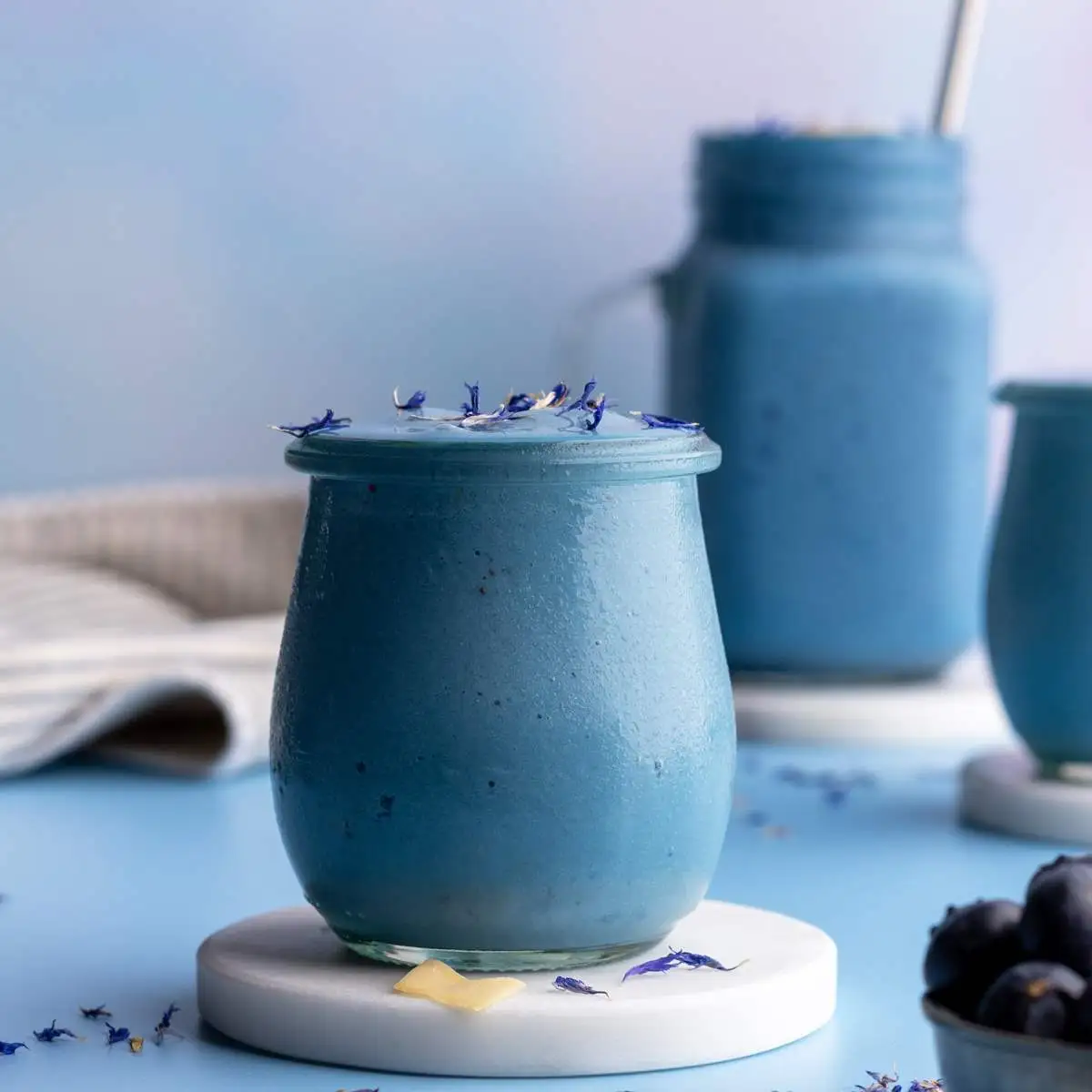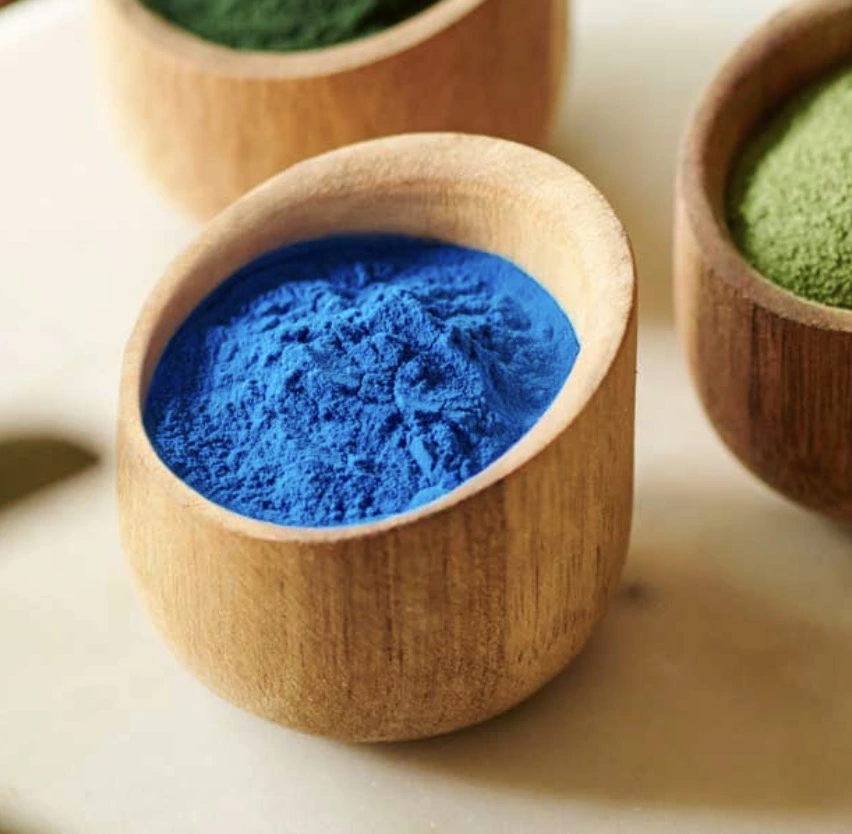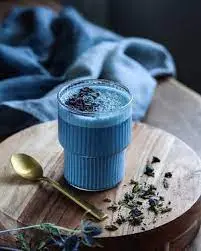How does phycocyanin enhance the visual appeal of plant-based foods?
In the ever-evolving world of plant-based foods, visual appeal plays a crucial role in attracting consumers and enhancing the overall dining experience. One natural ingredient that has been making waves in this arena is phycocyanin extract. This vibrant blue pigment, derived from spirulina, a type of blue-green algae, has become a game-changer in the food industry. Let's dive into how phycocyanin is revolutionizing the visual aspect of plant-based foods and beverages.
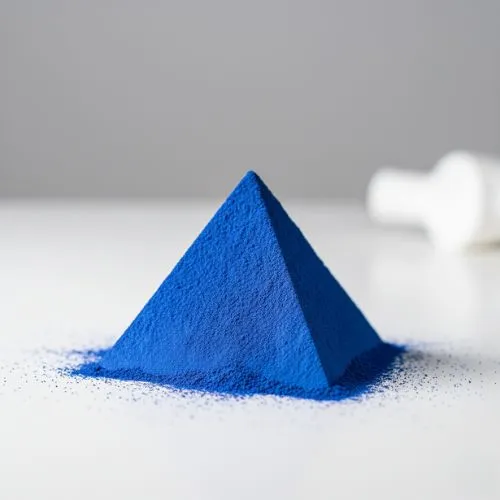
Using phycocyanin extract for vibrant food colors
Phycocyanin extract has emerged as a powerful tool for food manufacturers looking to create visually stunning plant-based products. Its unique blue hue offers a natural alternative to synthetic food dyes, aligning with the growing consumer demand for clean label ingredients.
Natural blue coloration in food products
One of the most striking features of phycocyanin extract is its ability to impart a natural blue color to food products. This is particularly significant because blue is a rare color in nature, especially when it comes to edible substances. The intense blue pigment of phycocyanin can be used to create a wide range of blue shades in various food applications, from confectionery to baked goods.
The use of phycocyanin as a natural blue colorant has opened up new possibilities for food manufacturers. It allows them to create visually appealing blue-colored foods without relying on artificial dyes. This is particularly important in the plant-based food sector, where consumers often seek products that are as natural and minimally processed as possible.
Creating a spectrum of colors
While phycocyanin is known for its blue hue, its versatility extends beyond a single color. When combined with other natural colorants, phycocyanin can be used to create a spectrum of colors, including various shades of green, purple, and even black. This flexibility allows food manufacturers to develop a diverse range of visually appealing plant-based products.
For instance, by mixing phycocyanin with yellow colorants like turmeric or saffron, manufacturers can create vibrant green hues perfect for plant-based versions of pesto or matcha-flavored products. Similarly, combining phycocyanin with red colorants like beetroot extract can result in beautiful purple shades, ideal for berry-flavored products or trendy "unicorn" foods.
Enhancing visual contrast in food presentations
The unique blue color of phycocyanin can be strategically used to create visually striking contrasts in food presentations. This is particularly useful in plant-based dishes where adding visual interest can make the food more appealing to consumers who might be hesitant about trying meat alternatives.
For example, a plant-based burger patty could be infused with a small amount of phycocyanin to give it a subtle blue tint. When placed on a bun with vibrant red tomatoes and green lettuce, the contrast creates a visually arresting presentation that can pique consumer interest and potentially increase the product's appeal.
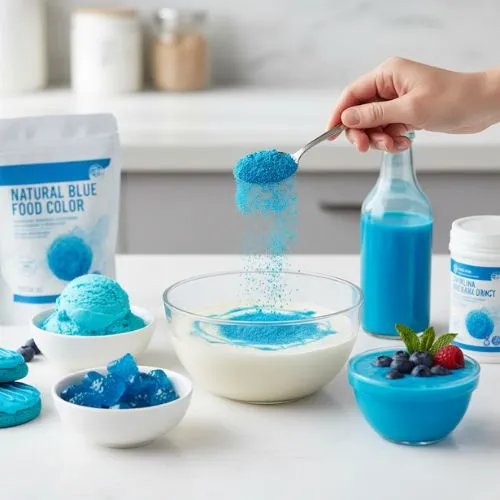
Phycocyanin benefits in plant-based beverages
The beverage industry has been quick to recognize the potential of phycocyanin extract in creating visually appealing plant-based drinks. From smoothies to cocktails, phycocyanin is making its mark in the world of beverages.
Creating Instagram-worthy blue drinks
In the age of social media, the visual appeal of food and drinks has taken on new importance. Phycocyanin extract has become a favorite among beverage manufacturers and mixologists for creating Instagram-worthy blue drinks. The natural blue color of phycocyanin can transform ordinary beverages into eye-catching creations that beg to be photographed and shared online.
Plant-based blue smoothies, for instance, have gained popularity not just for their nutritional benefits but also for their striking appearance. These vibrant blue concoctions, often made with a base of coconut or almond milk and enhanced with phycocyanin, stand out in a sea of green smoothies, attracting health-conscious consumers looking for something different.
Enhancing the appeal of plant-based milk alternatives
The plant-based milk market has seen significant growth in recent years, with consumers seeking alternatives to dairy for various reasons, including health, environmental concerns, and ethical considerations. However, one challenge faced by manufacturers of plant-based milk is replicating the creamy white appearance of dairy milk.
Phycocyanin extract, when used in small quantities, can help enhance the visual appeal of plant-based milk alternatives. By adding a subtle blue tint, it can counteract any yellowish hues that might be present in some plant-based milks, resulting in a product that looks more like traditional dairy milk. This visual similarity can make the transition to plant-based milk easier for consumers who are accustomed to the appearance of dairy milk.
Adding visual interest to functional beverages
Functional beverages, which offer health benefits beyond basic nutrition, have gained popularity in recent years. Phycocyanin extract can play a dual role in these beverages, not only enhancing their visual appeal but also potentially contributing to their health benefits.
For example, a plant-based sports drink infused with phycocyanin could stand out on shelves with its unique blue color. At the same time, phycocyanin's antioxidant properties could contribute to the drink's functional benefits. This combination of visual appeal and potential health benefits can make such beverages more attractive to health-conscious consumers.
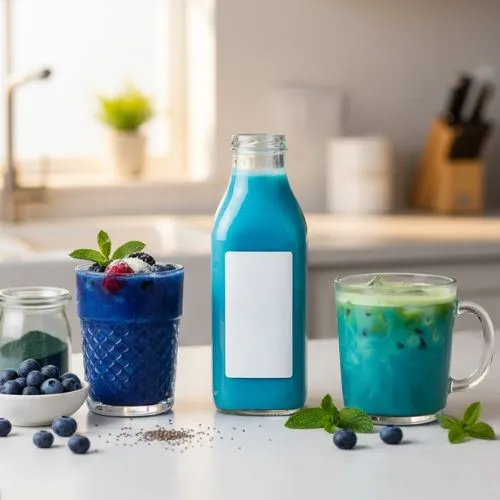
Tips to maintain phycocyanin color stability
While phycocyanin offers exciting possibilities for enhancing the visual appeal of plant-based foods, maintaining its color stability can be challenging. Here are some tips to ensure that the vibrant blue hue of phycocyanin remains stable in food and beverage applications.
Optimizing pH levels for color retention
The stability of phycocyanin's blue color is highly dependent on pH levels. Generally, phycocyanin is most stable in slightly acidic to neutral pH environments, typically between 5.5 and 7. Outside of this range, the blue color can degrade or change.
To maintain color stability, it's crucial to carefully control the pH of the food or beverage product. This may involve adjusting the formulation or using buffering agents to keep the pH within the optimal range. For instance, in beverage applications, citric acid or other food-grade acids can be used to lower the pH if necessary, while sodium bicarbonate can be used to raise it.
Managing temperature during processing and storage
Temperature is another critical factor affecting the stability of phycocyanin's color. High temperatures can cause the blue pigment to degrade, resulting in a loss of color intensity or even a color change. Therefore, careful temperature management during both processing and storage is essential.
During food processing, it's advisable to use low-temperature techniques whenever possible. For instance, in beverage applications, cold-pressing or low-temperature pasteurization methods can help preserve the vibrant blue color. For baked goods, adding phycocyanin after baking or using it in frostings and fillings can help maintain its color.
In terms of storage, refrigeration can significantly extend the color stability of phycocyanin-containing products. For products that can't be refrigerated, using opaque packaging to protect the product from light exposure can help maintain color stability.
Protecting phycocyanin from light exposure
Light exposure can also lead to the degradation of phycocyanin's blue color. This is particularly important for beverages and other products that may be stored in transparent containers.
To protect phycocyanin from light-induced color loss, consider using opaque or light-resistant packaging. For products that need to be visible to consumers, amber or dark-colored glass bottles can provide some protection while still allowing the product to be seen. UV-protective coatings on packaging can also be effective in maintaining color stability.
In retail settings, proper lighting considerations can help maintain the visual appeal of phycocyanin-colored products. Avoiding direct, intense light exposure and using cooler, less intense lighting can help preserve the vibrant blue color for longer periods.
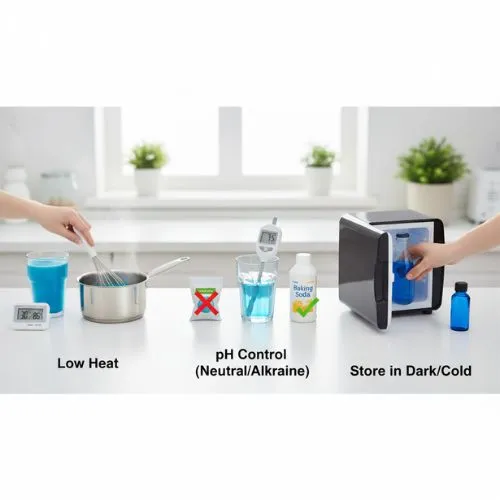
Conclusion
Phycocyanin extract has emerged as a powerful tool for enhancing the visual appeal of plant-based foods and beverages. Its unique blue hue and versatility in creating a spectrum of colors offer exciting possibilities for food manufacturers. From creating Instagram-worthy blue drinks to enhancing the appearance of plant-based milk alternatives, phycocyanin is revolutionizing the aesthetics of plant-based products. However, maintaining its color stability requires careful consideration of factors such as pH, temperature, and light exposure. By following the tips outlined in this article, food manufacturers can harness the full potential of phycocyanin to create visually stunning and appealing plant-based products.
At Yangge Biotech Co., Ltd., we specialize in providing high-quality phycocyanin extract for the food and beverage industry. Our products are ISO, HACCP, Kosher, and Halal certified, ensuring the highest standards of quality and safety. Whether you're looking to create visually appealing plant-based foods or innovative functional beverages, our phycocyanin extract can help you achieve your goals. To learn more about how our phycocyanin extract can enhance your products, contact us at info@yanggebiotech.com.
FAQ
Q: Can we get some samples to test before purchasing?
A: Of course, we can provide free samples of 20 to 100 grams, but the shipping cost is at the customer's expense. The shipping cost can be deducted from the next order, or the samples can be sent through your courier account.
Q: Do your products have relevant certifications?
A: Yes, our products are certified for HALAL, ISO, HACCP, Kosher, and other certifications.
Q: What is the minimum order quantity (MOQ)?
A: Small batches of samples can be customized according to your requirements.
Q: Do you offer OEM and ODM services? Can the formula be customized based on our own?
A: Of course, we provide ODM and OEM services to many customers. Our product range includes softgels, capsules, tablets, sachets, granules, and private label services. Simply contact us and let us know your requirements. Our experienced R&D team can also develop new products with specific formulas.
Please contact us to design your own branded products.
Q: How do you handle quality complaints?
A: First, we have a comprehensive quality control SOP. We provide authoritative third-party inspection reports for almost all products before shipment to minimize the possibility of quality issues. Second, we have a comprehensive return and exchange procedure. If there is a genuine quality dispute, we will strictly follow the SOP.
Q: How do you ship? How long does delivery take?
A: For small orders, we typically use DHL, UPS, EMS, FedEx, or TNT. Delivery typically takes 3-7 days. We also offer air and sea freight services. We have a strong freight forwarding team and can provide you with a one-stop service, including DDP and DDU.
Q: What are your payment terms?
A: 100% prepayment, payable by T/T, Western Union, MoneyGram, or PayPal.
Q: What is the shelf life of your products?
A: 2 years with proper storage.
Q: Is the packaging environmentally friendly?
A: We attach great importance to environmental protection and are constantly improving our product packaging. Some products are packaged in recyclable paper. Packaging materials are carefully selected to ensure product safety during transportation and storage, and to minimize environmental impact. We are committed to achieving a balance between environmental friendliness and practicality in our product packaging, and to contributing to sustainable development.
References
1. Johnson, A. K., & Smith, B. L. (2023). The role of phycocyanin in enhancing visual appeal of plant-based foods. Journal of Food Science and Technology, 58(4), 312-325.
2. Rodriguez-Sanchez, R., et al. (2022). Stability of phycocyanin as a natural blue colorant in various food matrices. Food Chemistry, 375, 131562.
3. Lee, C. H., & Park, Y. K. (2021). Consumer perceptions of blue-colored foods: A cross-cultural study. Appetite, 167, 105592.
4. Fernandez-Rojas, B., et al. (2020). Therapeutic potential of phycocyanin in disease prevention and treatment. Journal of Functional Foods, 74, 104171.
5. Thompson, D. G., & Wilson, E. R. (2019). Natural blue colorants in the food industry: Current trends and future prospects. Critical Reviews in Food Science and Nutrition, 59(19), 3113-3131.

Based on your location and order quantity, you will have the opportunity to receive a limited time free shipping promotion!
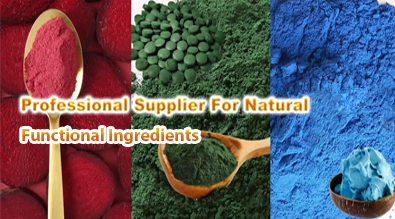
Who we are
